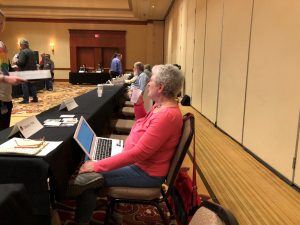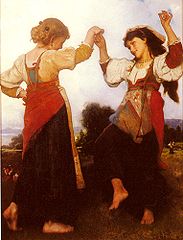It’s my father’s birthday today. He died in 1988. on 8/8/88, to be precise, five minutes before midnight. He was very fond of puns and bad jokes and I was there and I will maintain, whatever anyone tells me to the contrary, that he died before midnight so that he could make one last joke. His son-in-law was American, so I think it would have pleased him that the joke works in both US English and Australian English.
My tribute to him is a story that’s currently being considered for publication. On his deathbed, you see, I promised I’d write a story (a mystery story, I thought at the time) that was inspired by the murders in Belanglo Forest, NSW, in the 1980s. I camped in that forest at that time, and must have walked by dead bodies and did not see them. The story is written and it contains some carefully placed jokes that only my father would truly understand. It’s being considered by an editor, and if it gets published, I’ll let you know, so that you, too can explore a bit of Belanglo Forest and wonder if you would be like me and walk cheerfully of an early morning, entirely unaware of being surrounded by grue. It’s not the story I promised, because I found that the promise was too laden with missing my father. In all these decades you’d think I’d get over it, but there are some things we don’t get over.
Since 1988, Christmas has been difficult. Until then, it didn’t really matter that we didn’t do Christmas, because I could always say, “I prefer my father’s birthday.” And I got to decorate my BFF’s Christmas tree with her, and cook Christmas treats, and she came round to us to fry latkes for Chanukah. We shared our festivals up to the point our parents agreed, and life was much better.
After Dad died, there was an ache every Boxing Day, and when people pressured me to celebrate Christmas (as they still do) “because it’s secular” I didn’t have the heart to tell them that they were treading on my father’s grave. My close friends know this, and have found ways to make this week happy, and these last few days have been lovely.
Dad and I would have strategised our way through the pandemic, and he would’ve made bad jokes, and he would’ve opened his dental surgery extra hours to make sure that no-one missed out on dental treatment just cos there was a pandemic. He would have turned up his nose at my cooking when I cooked what I wanted to, which, during his last few years was the food my friends from Malaysia and Singapore and Japan taught me, and before that the food that my non-Jewish Australian friends taught me. But he got used to pizzas quite quickly and, given enough time, he would have learned to love yakitori. The first few times he would poke and it and ask for real food, though. And he never ate anything savoury with spices. Spices, in his world, were for sweet food.
How do I know he would have adjusted? Well, when I was a child, his special time to cook each week was Sunday mornings. We’d sit round and eat and read and play patience and do the crossword, and eat his special breakfast.
For years this breakfast was scrambled eggs made with pickled cucumber, eaten with leftover challah, or, when he felt exotic, French toast made with leftover challah, or something equally from things he found in our kitchen. He’d make Turkish coffee for himself in a saucepan (not actual Turkish coffee, “Bushell’s Turkish Coffee” a local excuse to overcaffeinate), and the rest of us would drink tea. When he learned that he liked Italian food (finally!) and that bagels were likewise trustworthy, he’d go out early, pick up some bagels from Glick’s (bagels were an excuse to gossip, I suspect, just as offering to get more milk or eggs were – we the children were sent out as search parties for him some nights when he didn’t come back from getting milk because the conversation was more interesting than walking home), and then go to the local cheese factory and get ricotta so fresh it still steamed, and some pecorino, and maybe another cheese or two. Always ricotta and pecorino. We ate them with fresh tomato and cucumber and maybe dill pickles. The dill pickles were always Pose’s pickles, and were so exactly like the ones my grandfather made that one day (just a few years ago) I asked Mr Pose about the recipe and he explained that he and my grandfather came from the same town, so of course they ate the same pickles. The only reason the pickles were optional, was because often, Saturday lunch would be leftover challah, topped with leftover roast potato, leftover roast (mostly lamb, this being Australia in the 60s/70s), sliced tomatoes and those wonderful pickles. I miss those pickles. I miss Dad more, though.
The reason Dad’s memory is eliciting thoughts of food is that his birthday rarely coincided with Chanukah. Today was the last day of Chanukah and he would have been 99 if he had lived. He died when I was 27, and I was born in 1961 and this year am 61. Dad would have teased me about the 61/61.
Ave atque vale, Dad, and I wish you were here to tell me (as you used to), “That’s Greek to me,” and then laugh when I try to explain with great sincerity but not entirely disingenuously, that it’s Latin. Then we’d wonder why it doesn’t work nearly as well in Hebrew and we’d say ‘Shalom v’Shalom” to each other, to make sure we were both telling the same joke.
I miss you.
 Somewhere fairly recently I was in a conversation with someone (can you tell I cannot for the life of me remember when, or with whom, the conversation occurred?) about the why of writing. The person I was talking with spoke pretty definitively about why writers write, and while her points (I can remember it was a woman I was speaking with, maybe by the time I finish this post I’ll remember her name) were valid, I thought they were also limited. As if she could not imagine reasons to write that were not hers. Which is the crux of why I write. I’m trying to figure out why people do what they do. It’s why I read, too: to understand.
Somewhere fairly recently I was in a conversation with someone (can you tell I cannot for the life of me remember when, or with whom, the conversation occurred?) about the why of writing. The person I was talking with spoke pretty definitively about why writers write, and while her points (I can remember it was a woman I was speaking with, maybe by the time I finish this post I’ll remember her name) were valid, I thought they were also limited. As if she could not imagine reasons to write that were not hers. Which is the crux of why I write. I’m trying to figure out why people do what they do. It’s why I read, too: to understand.

 It’s been several years since I’ve gathered with fans and other writers in person. I used to attend local science fiction conventions regularly, but the last one was FogCon (Walnut Creek CA) in February 2020. I find it amusing that my last haircut was in March 2020, although one is not necessarily causative of the other. I attended book signings at local stores and gave presentations at our local branch library. I also organized a monthly lunch and support group with a group of local writers. Needless to say, all these came to a screeching halt with the pandemic, and while some have ventured into in-person conventions, I have not done that yet. I’m in my mid-70s, which in itself increases my risk of serious disease or death, but I feel strongly that no one should ever feel pressured to defend wearing a mask or justify staying away from indoor gatherings. (In my case, there’s the personal risk, plus that my younger daughter spent the final year of her medical residency in Family Medicine taking care of desperately ill and dying Covid patients — this was before vaccines were available — and she is fiercely protective of me.)
It’s been several years since I’ve gathered with fans and other writers in person. I used to attend local science fiction conventions regularly, but the last one was FogCon (Walnut Creek CA) in February 2020. I find it amusing that my last haircut was in March 2020, although one is not necessarily causative of the other. I attended book signings at local stores and gave presentations at our local branch library. I also organized a monthly lunch and support group with a group of local writers. Needless to say, all these came to a screeching halt with the pandemic, and while some have ventured into in-person conventions, I have not done that yet. I’m in my mid-70s, which in itself increases my risk of serious disease or death, but I feel strongly that no one should ever feel pressured to defend wearing a mask or justify staying away from indoor gatherings. (In my case, there’s the personal risk, plus that my younger daughter spent the final year of her medical residency in Family Medicine taking care of desperately ill and dying Covid patients — this was before vaccines were available — and she is fiercely protective of me.)